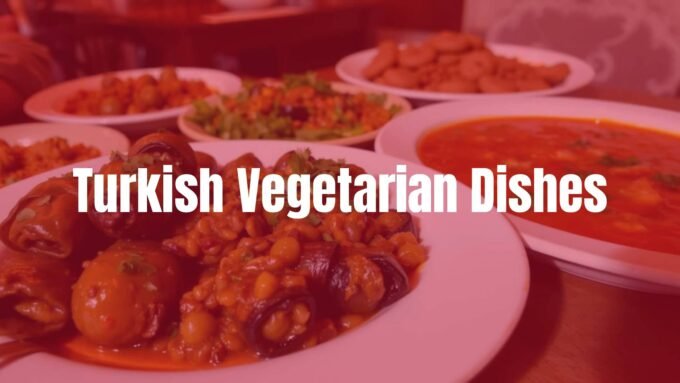Want to start your mornings with more color and taste? Turkish breakfast, called kahvaltı, is not just another meal-it’s a time to relax and enjoy food with people you care about. Unlike the quick breakfasts many of us often eat, a Turkish breakfast asks you to take your time, taste each dish, and enjoy long conversations. This guide will show you the main foods, ingredients, and classic recipes so you can set up your own Turkish breakfast at home, and answer all your questions about what makes Turkish breakfast unique.

What Is a Traditional Turkish Breakfast?
In Turkey, breakfast is more than just eating before you start the day. The word kahvaltı means “before coffee,” which points to the long meal that comes before you drink coffee. Turkish breakfast is known for its big variety of small dishes that fill the table so everyone can pick and choose what they like. This style, called serpme kahvaltı (meaning “spread” breakfast), has become popular around the world for how fresh and diverse it is.
While everyday breakfasts in Turkey are often simple-like bread, cheese, and olives-a true Turkish breakfast is more elaborate. It’s a time to gather slow, chat, and enjoy many cups of tea and lots of different foods. The focus on sharing and spending time together is just as important as the food itself, making it a great reason to host a relaxed brunch with friends or family.
Main Foods in Turkish Breakfast
Think about a table packed with many flavors and textures-that’s Turkish breakfast. There are no strict rules, but some foods are usually there. You’ll almost always see several kinds of cheese, especially salty Turkish beyaz peynir (like feta), and maybe a soft cheese like mozzarella. Olives, both black and green, are a must and usually very flavorful.
Fresh vegetables, mostly sliced tomatoes and cucumbers, are always included to give a fresh, crunchy taste. Eggs also have a main spot-sometimes they’re just hard-boiled, but they could also be scrambled as menemen or poached with yogurt and chili butter as çılbır. Bread is basic for Turkish breakfast-expect fresh loaves, sesame bread rings called simit, or flaky börek pastries. For something sweet, you’ll find jams, honey, and kaymak (clotted cream) to spread or drizzle on bread. With so many options, everyone can find something they enjoy.

Why Turkish Breakfast Matters
Breakfast in Turkey is about being together. It shows how important hospitality and sharing food are there. Unlike some Western breakfasts that you eat quickly before heading out, kahvaltı is slow and relaxed, so people can talk and spend time together. Even in busy cities, people still make time for these long breakfasts on weekends or special days, and there are even special “Breakfast Streets” where you can enjoy the tradition. It’s all about enjoying simple moments with food and company.
Key Ingredients in Turkish Breakfast
The magic of Turkish breakfast comes from using good, fresh foods. You don’t need anything fancy-just simple, quality ingredients. Whether or not you have access to Turkish markets, choosing fresh cheeses, vegetables, and breads will help you get the real taste.
The focus is on whole foods that are easy to recognize. Each item adds its own taste for a full and pleasing meal. Here are some common foods you’ll see on a Turkish breakfast table:
Cheeses, Olives, and Breads Table
| Item | Description |
|---|---|
| Cheese | beyaz peynir (like feta), mozzarella, or other soft cheeses |
| Olives | Black and green, often marinated |
| Bread | Fresh, crusty bread; sesame seed simit; soft pide; or savory börek pastries |
Fresh Vegetables and Fruits
Vegetables are always included, mainly sliced tomatoes and cucumbers, sometimes with green peppers. They might get a touch of olive oil and salt, but are usually served plain to let their natural flavors stand out. In season, you’ll often see fruit like watermelon or whatever is fresh at the moment, adding color and natural sweetness.
Jams, Honey, and Spreads
For sweetness, Turkish breakfast tables have homemade jams (especially sour cherry), honey (sometimes still in the honeycomb), and kaymak (thick clotted cream). Sometimes you’ll also see a bowl of ricotta-style cheese with olive oil and spices. You can mix and match these to find the combo you like best.
Drinks: Tea and More
Despite the name kahvaltı (“before coffee”), tea is the main drink at Turkish breakfast. It’s served strong in small, tulip-shaped glasses for refill after refill. Some people like juice, and traditional Turkish coffee is usually saved for after the meal-but can be enjoyed during if you prefer. Tea helps people sit and talk longer over breakfast.

Simple Turkish Breakfast Recipes
You don’t have to make every item for your own Turkish breakfast. Pick a few important foods for a good taste of the tradition. Here are some favorites that capture the Turkish breakfast style and are straightforward to make at home.
Menemen (Eggs with Tomatoes and Peppers)
- Sauté onions and green peppers in olive oil.
- Add chopped tomatoes (fresh is best), salt, black pepper, and a pinch of oregano.
- Once softened, stir in beaten eggs. Cook on low, stirring gently, until eggs are just set.
- Serve warm, right out of the pan, with bread to scoop up the mixture.
Simit (Sesame Bread Rings)
- Make a basic yeast dough.
- Shape into rings, dip in water mixed with a little molasses, then roll in sesame seeds.
- Bake until golden and crisp outside.
- Enjoy warm or buy from a bakery if you don’t want to bake at home.
Çılbır (Poached Eggs with Yogurt and Chili Butter)
- Mix room-temperature yogurt with garlic and fresh herbs for a base.
- Poach eggs and place them on the yogurt.
- Melt butter with chili flakes and spoon over the eggs.
- Eat with bread for a rich, tangy breakfast dish.
Peynirli Poğaça (Feta Cheese Pastries)
- Prepare a soft pastry dough.
- Fill with feta cheese mixed with parsley.
- Shape, bake, and serve warm or room temperature.
- Great for making ahead and eating on busy mornings or for brunch.
Vişne Reçeli (Sour Cherry Jam)
- Cook sour cherries with sugar until thickened.
- Let cool and keep in a jar for spreading on bread or with kaymak.
How to Set Up a Turkish Breakfast at Home
Having a Turkish breakfast at home doesn’t have to be hard. The trick is to focus on variety and good presentation. Think less about complicated cooking, and more about arranging tasty foods in small dishes and bowls.
- Slice veggies, put olives and cheeses in different bowls.
- Set out jams, honey, and cream in small dishes.
- Add your bread-fresh loaves or simit-in a big basket.
- If you made eggs or pastries, put them in the center.
The table should look inviting, with everything easy to reach-more like a buffet than one big plate per person.
Cooking Menemen: Quick Tips
- Use ripe tomatoes for the best taste.
- Let veggies soften fully to build flavor.
- Add eggs last and cook on low so they stay soft.
- Stop cooking when eggs are just set; they will keep cooking a little in the pan.
Serving Tips for Sharing
- Set small plates and utensils so everyone can serve themselves.
- Make sure there are enough spoons for jams and spreads.
- Keep the tea hot and flowing-it keeps the conversation going.
- Most important: relax and enjoy eating together.

Nutrition and Health Benefits
A real Turkish breakfast is filling, balanced, and uses mostly whole foods. Unlike processed breakfasts high in sugar and fat, it relies on veggies, eggs, cheese, and healthy fats like olive oil. This mix gives you good protein, fiber, and steady energy for the day.
Example Nutrition Data
| Dish | Calories | Fat | Carbohydrates | Protein |
|---|---|---|---|---|
| Çılbır | 430 kcal | 34g (18g sat.) | 8g | 25g |
| Menemen | 165 kcal | 11.5g (2.4g sat.) | 9.3g | 7.2g |
| Full Breakfast Plate* | 700 kcal* | 48g* | 29g* | 41g* |
*Numbers depend on what you include and how much you eat.
Balancing Tastes for Health
In Turkish breakfast, salty foods (like cheese and olives), sweet jams, and fresh veggies all balance one another. This mix helps you eat a little of everything and makes the meal more enjoyable while providing different nutrients. Eating breakfast this way also helps you pay more attention to what and how much you eat.
FAQ: Turkish Breakfast Recipes
Ready to start making Turkish breakfast at home? Here are answers to some common questions.
What makes Turkish breakfast different?
Unlike many other breakfasts, Turkish breakfast is about putting many small dishes on the table so everyone can try a little of everything. Instead of a single dish, you get to pick and choose. It’s slow, social, and usually includes lots of tea-that’s what makes it special.
Is Turkish breakfast healthy?
Yes! With lots of fresh veggies, eggs, cheese, and olives, it’s a good blend of protein, fiber, and healthy fats. Some items like pastries are a bit richer, but if you eat mostly the simple foods, it’s a fresh and balanced meal.
What can I use if I don’t have Turkish ingredients?
- Feta can take the place of beyaz peynir.
- Red chili flakes are fine instead of Aleppo pepper.
- Use any fresh bread if you don’t have simit or pide.
- Try regular jam, cream, or ricotta if you can’t find Turkish jam or kaymak.
The best thing is to start with what you have-just make sure there’s variety and everything is fresh.















Leave a comment